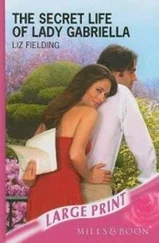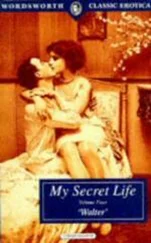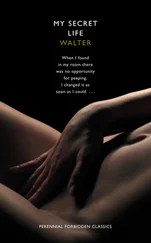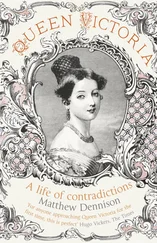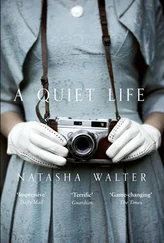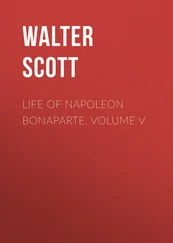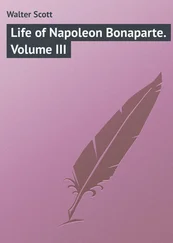Sickert did not stay to revel in the glory for long. He went to Paris for a few days: the Salon had recently opened and so, more importantly, had the eighth – and final – Impressionist Exhibition, which included several new works by Degas. 61 His and Ellen’s resolve to buy a Degas picture had strengthened, and it was probably on this trip that Sickert arranged the purchase of the pastel La Danseuse Verte . It came from the private collection of Charles Ephrussi, though the sale was handled by a dealer. Sickert paid a little over 2000 francs (about £80) for the picture. 62 He also noted a second work, a pastel lithograph, at the dealer Closet’s: ‘A singer with two white gloves & many globes of light & a green wooden thing behind & fireworks in the sky & two women’s heads in the audience.’ 63 Back in London, he and Ellen decided that they should buy this picture as well. The price was only £16. Ellen agreed to sell some stocks to pay for it, but the sum was required quickly and Sickert wrote to Whistler pleading for the return of some of the money they had paid him on account for their portraits. Tactfully, he suggested it was needed for living expenses. 64 Blanche was then commissioned to buy the picture – if possible at a discount. 65 Displaying his characteristic helpfulness and efficiency, Blanche delivered the picture in person when he came to London at the end of the month (Sickert repaid the kindness by presenting his friend with a small painting of his own). 66 Blanche was charmed by the Sickerts’ new home: a ‘maison délicieuse … pleine de jolies choses’ (the cold mauve walls had been repainted) 67 and was amazed to discover the Danseuse Verte , which he had known well chez Ephrussi, now on their wall. He assumed that Sickert must have ‘pas mal d’argent’ to be making such acquisitions. 68
The assumption, as Blanche soon came to realize, was quite false. Sickert had no money. If he had possessed any he would certainly have been extravagant with it. In its absence he was extravagant with his wife’s. Throughout the first flush of home-making Ellen seems to have encouraged such expenditure. The house in Broadhurst Gardens was by no means cheap: at just under £80 a year, the rent and rates were not inconsiderable – quite apart from the cost of decking the walls with works by Degas and Whistler. 69 It was only with time that Ellen came to recognize her husband’s complete – almost wilful – recklessness in money matters. ‘Giving money to Walter’, she once remarked, ‘is like giving it to a child to light a fire with.’ 70 With no income of his own, and no sales from his pictures, he was almost entirely dependent upon her. She gave him an allowance, but sought to control his excesses by keeping it small. 71 To evade such restrictions he ran up debts and borrowed occasional small sums from Whistler, his mother, and his brothers. 72 Sickert disbursed what he had with a programmatic recklessness. ‘I am so convinced’, he told one friend, ‘that the way to have, is to spend, and that lavish generosity pays, as well as being delightful. The thing is to give, give, give. You always get back more than you give.’ 73
The summer of 1886 was hot. By mid July Ellen had begun to wilt, and Walter’s studio under the roof at Broadhurst Gardens had become ‘like an oven’. For relief, they fled to the glaciers of Switzerland, stopping to admire some ‘wonderful’ Holbeins at Basle. Ellen loved Alpine air and Alpine scenery; Walter was less convinced. ‘I suppose it is very healthy,’ he told Blanche, ‘but I prefer Marylebone for a holiday.’ He fell ill after taking a dip in the Rhine, and altogether could not wait to be back in London ‘with the green danseuse who is better than all the scenery of Switzerland’. He filled the long hours at Pontresina, the little resort town where they were staying, by making a closely worked etching of a young girl standing in the gloom of a dark kitchen – one of several ‘Rembrandt interiors’ he had noted. 74 They returned to England at the end of September via Munich and Dresden, where – to judge from the series of etchings that Walter produced – they had a rather jollier and more active time in crowded cafés and at the Oktoberfest. 75
Back in London, Sickert threw himself into the exhibition season with new vigour. Although Whistler’s presidency prompted a radical overhaul of the SBA’s exhibiting policy (the Suffolk Street galleries were refurbished to Whistler’s designs, and the number of works on show was drastically reduced), total control was impossible. The society, in Sickert’s words, remained ‘half-savage’. There could be no guarantee that work by Whistler’s followers would be accepted. But for the efforts of Menpes and Stott, who were acting as ‘supervisors’, Sickert’s picture would have been rejected by a ‘stodgy’ hanging committee. 76
The painting, Rehearsal: The End of the Act , marked Sickert’s promised break from small-scale Whistlerian sketches. It was almost two foot square and depicted a woman slumped on a padded sofa. The well-informed would, nevertheless, perhaps still have recognized a Whistlerian debt. The model was Helen Lenoir of the D’Oyly Carte Company. Her exhausted pose might be read as the result of her labours in producing the Ten o’Clock Lecture. To reinforce the connection, Sickert’s earlier print of Miss Lenoir – The Acting Manager – was also on view, with several other works, at the Society of Painter-Etchers. Looking beyond the established outlets, Sickert also sent a figure study titled Ethel to the Institute of Painters in Oil Colours, a staid old society that numbered several of his father’s friends amongst its members. 77
His busy round of active self-advertisement was unexpectedly rewarded when he received an invitation to exhibit in the New Year with Les XX, a recently formed avant-garde Belgian art association that had instituted an annual salon in Brussels. At first Sickert suspected Blanche’s beneficent influence was behind this coup, being unable to imagine that his own ‘unassisted fame could have led any Society, however perspicacious, to single out the genius that [was] modestly hidden in the suburb of Hampstead’. 78 But that, it seems, is almost what had happened. Blanche was not involved. The Belgian painter Willy Finch had noticed Sickert’s work on a visit to England, and noticed too, no doubt, its debt to Whistler, of whom he was a great admirer. Acting as a talent scout, Finch had written enthusiastically to Octave Maus, the secretary of Les XX, praising the pictures as ‘très raffinées comme art’; 79 and Maus had duly sent an invitation. Sickert swelled with pride at this ‘marque de la plus haute distinction’, as he termed it in his fulsome letter of acceptance. He at once began work on a very large canvas some six foot square. 80
Sickert’s determined application was impressive, and his development, though perhaps less accelerated than Menpes’ or Starr’s, was certainly discernible to close observers. Whistler, who was not given to praising, noted it. That summer, while going round the Royal Academy show, he had impressed the critic Malcolm Salaman with a stray remark in front of a canvas by the young James Lavery. ‘Yes – very nice, don’t you know?’ he had said in his curiously effective manner. ‘But well, you know of all the young men, I should say, the one who will go furthest is Walter Sickert.’ 81 George Moore recounted a similar exchange. * And if Moore knew a thing he never wasted any time in passing it on. Sickert would have been aware both of his progress and of how much was expected of him.
Whistler’s admiration was, however, tempered by a keen sense of insecurity. Sickert’s extended holiday abroad, his decision to send to the Institute, the other demands upon his life, all vexed the ever touchy Master. Whistler wrote a peevish note to his pupil, complaining that he and his affairs were being neglected. Sickert sprang forward with assurances of continued loyalty and affection. ‘My dear Jimmy, You have written to me in a fit of the blues. Indifference you know perfectly well I have never shown towards anything that concerned you, dating back to years before I even knew you, and independence is a quality the merit of which I have never heard you throw a doubt upon – except indeed in the case of Switzerland and there I went for health & not for scenery.’ As to the ‘matter of the Institute’, Sickert explained that it had its ‘pleasant side’ for Whistler, showing that ‘now you have taught me to walk I am not crying to be carried’. Besides, it was a necessity for Sickert to ‘peddle’ his work where and how he could: ‘Painting must be for me a profession & not a pastime, or else I must give it up & take to something practical.’ 82 Ellen added her voice to these protestations. She promised to come and pose again for her portrait, and to bring Walter with her – so that he could ‘during the sittings attend to any affairs on which he can be useful to you’. 83
Читать дальше



